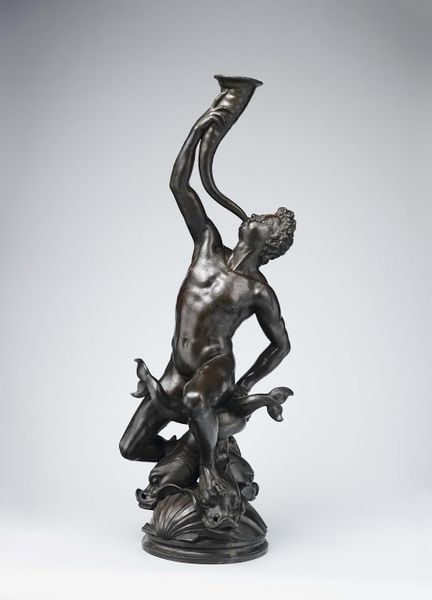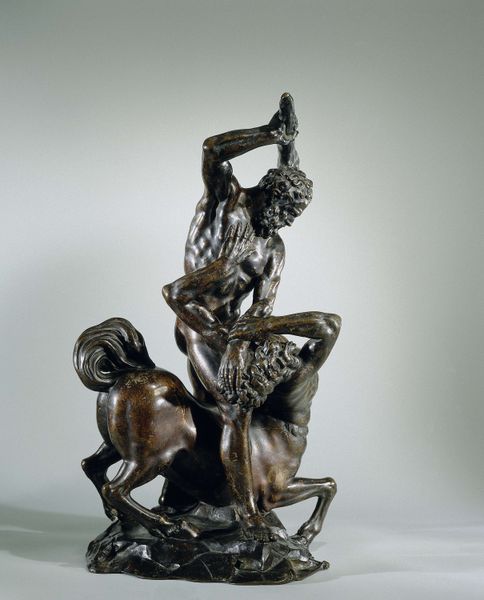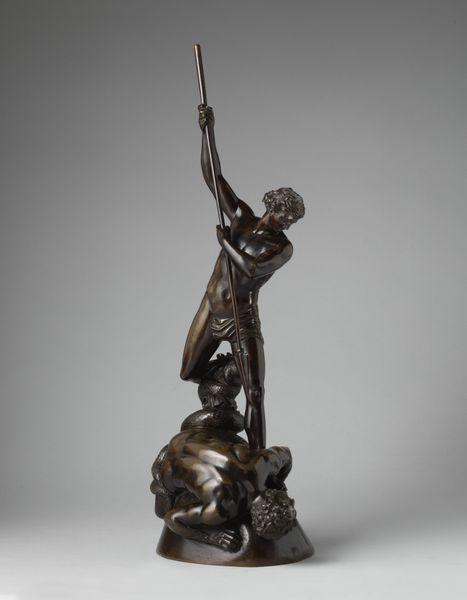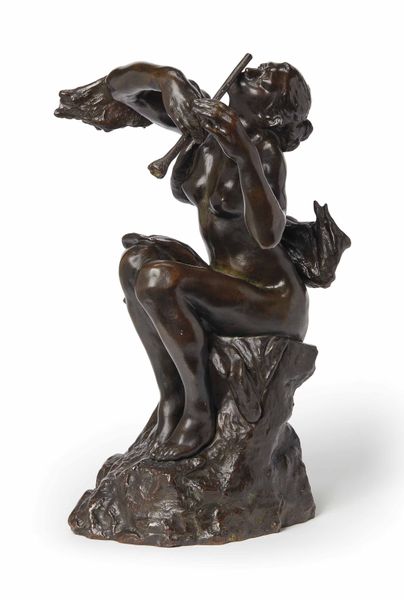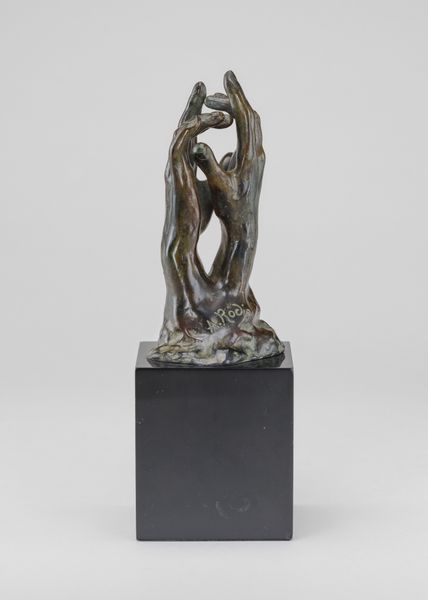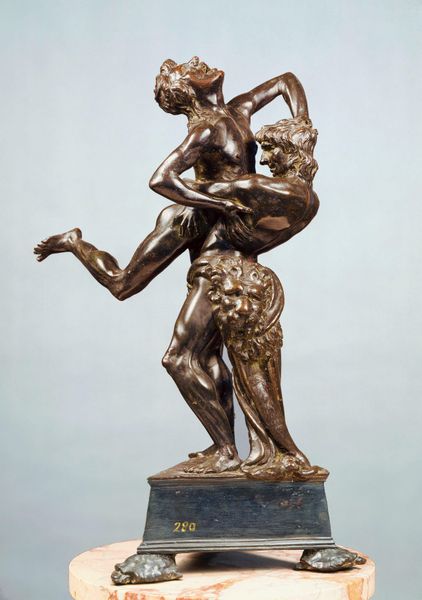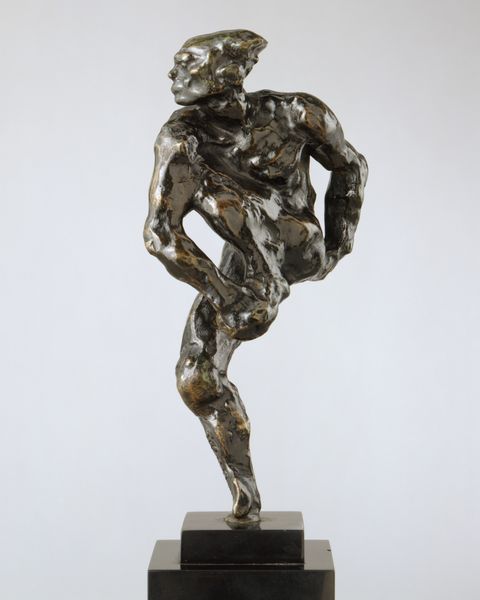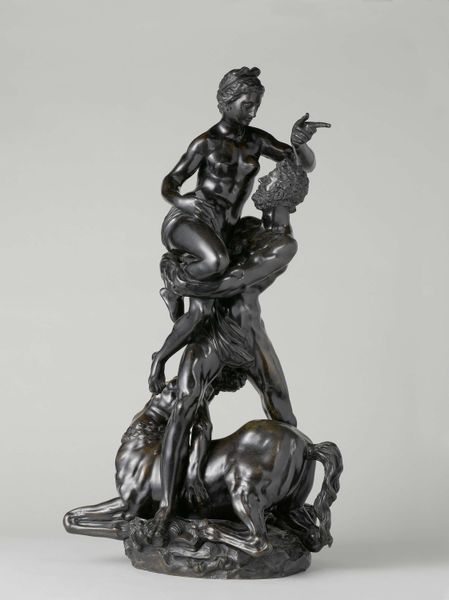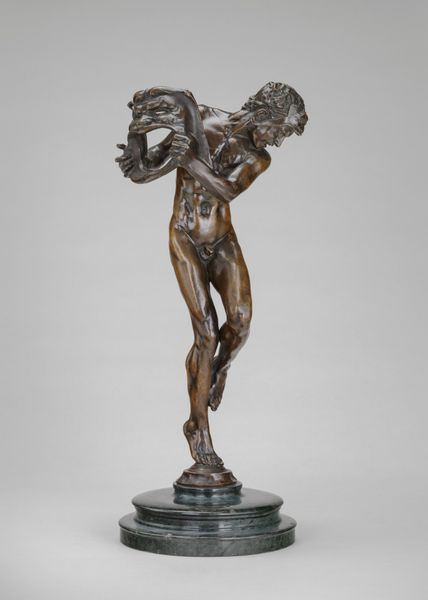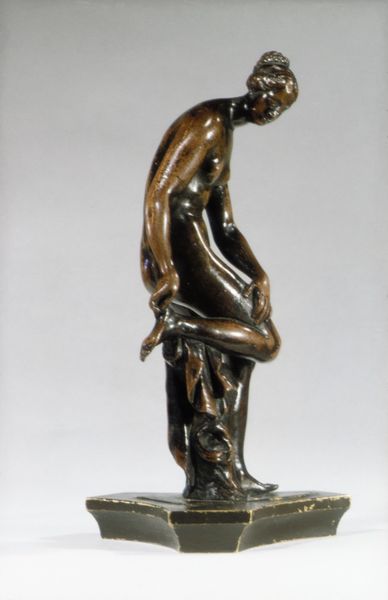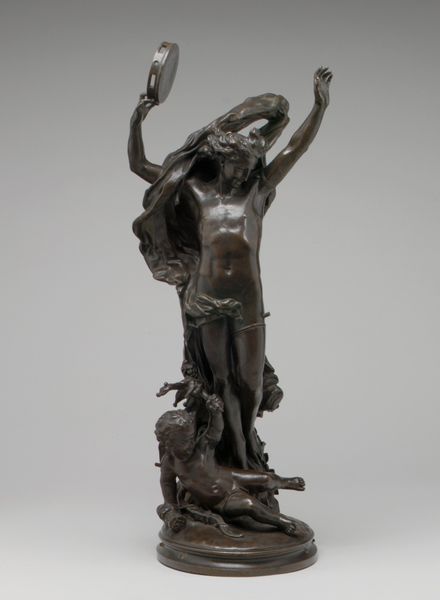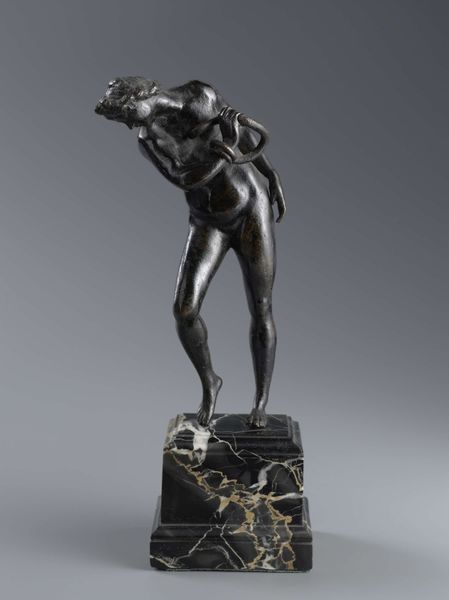
bronze, sculpture
#
allegory
#
sculpture
#
bronze
#
mannerism
#
figuration
#
sculpture
#
history-painting
#
nude
Dimensions: height 57 cm, width 21 cm, depth 25.5 cm, weight 11.4 kg
Copyright: Rijks Museum: Open Domain
Giambologna made this bronze sculpture, titled "The Rape of a Sabine Woman", sometime in the late 16th century. Bronze allowed Giambologna to create a dynamic, spiraling composition of three figures, capturing a moment of intense action. The lost-wax casting process, a technique refined since antiquity, was essential to this sculpture’s creation. This involved making a wax model, encasing it in clay, melting out the wax, and pouring molten bronze into the void. The bronze is then meticulously worked by hand with chisels and files. The dark, lustrous patina would have been achieved through the careful application of chemicals and heat. Bronze casting was a collaborative effort involving skilled artisans, each with specialized knowledge. The success of a piece like this rested not only on the artist's vision, but on the expertise and labor of many hands. Understanding the process is key to appreciating the technical and artistic achievement of this iconic work.
Comments
rijksmuseum about 2 years ago
⋮
This complex group of three intertwined figures is a reduced copy of the monumental marble sculpture Giambologna made in 1583 for the Loggia dei Lanzi in Florence, where it stands to this day. The composition is so ingenious that the statuette looks beautiful from all angles. This was quite an artistic challenge for sculptors in the late 16th century.
Join the conversation
Join millions of artists and users on Artera today and experience the ultimate creative platform.
